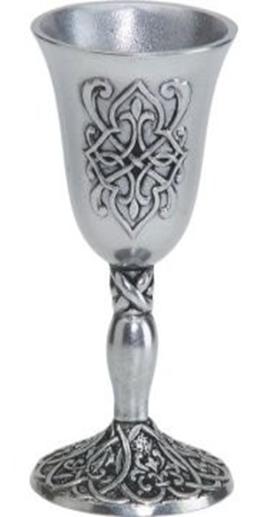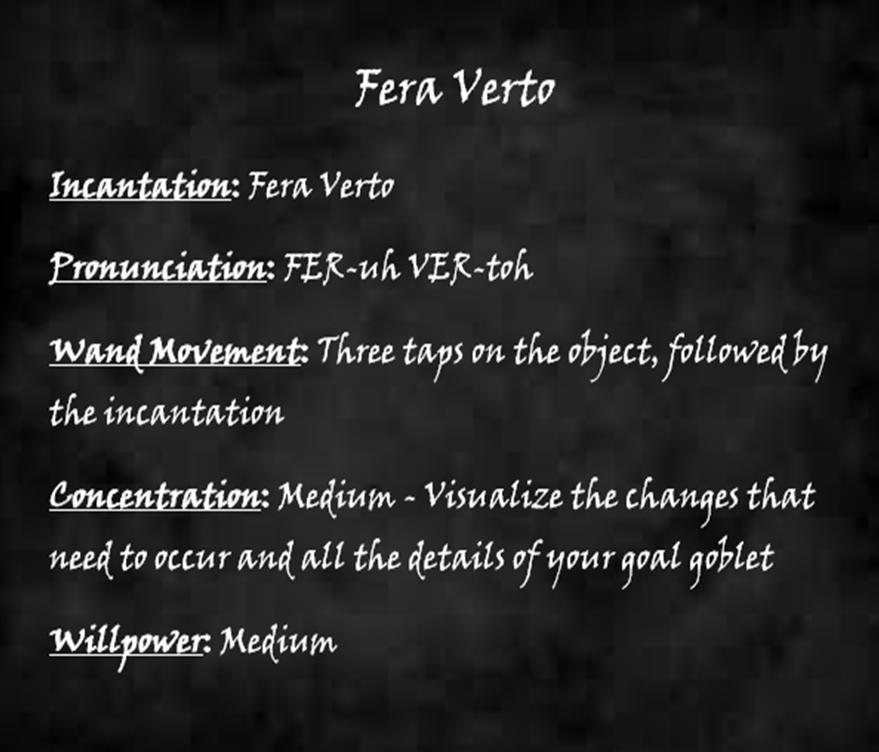Announcements
Welcome to Transfiguration!
11/25/22 - PA Applications will open January 1. Applicants should have completed all Year One assignments, including essays, and have at least an 85% in the course.
Please read the following before beginning this course or reaching out to Professor Mitchell or her PAs with questions.
1. If you have any questions about the course content, please reach out to any of the Transfiguration 201 Professor's Assistants. A list of current PAs can be found on the right side of this page. Please note that owls asking for the specific answers to quiz or essay questions will not be tolerated.
2. If you have submitted an assignment and are waiting for your grade to be returned, please do not reach out to the professor or PAs asking when it will be graded. Our grading team is composed entirely of volunteers and grading can occasionally take a little while due to both the number of assignments submitted and the real life commitments of our team. Please be patient.
3. If you believe your assignment has been graded in error, please reach out to either Professor Mitchell or Dane Lautner with the Grade ID (found in your Gradebook) for the assignment in question along with an explanation of what you believe is incorrect. Please ensure your message is respectful or your appeal will be denied.
4. If you have any comments or feedback about the course, please send an owl to Professor Mitchell.
Lesson 4) Critters and Dishes
Critters and Dishes
Welcome
Professor Mitchell stood in the corner of the room as the Second Years filed in. She appeared to be talking to someone, though no one could be seen. After a few seconds, a loud squawk came from behind the professor, then “Scary Mary! Scary Mary!”
“Oh shush you. I knew I shouldn’t have let Ame keep you for the weekend,” Professor Mitchell said to what the students could now see was a bright red parrot. She smiled as she turned to face the class.
Introduction
I hope you are all ready for today’s lesson as the spell we are learning is a bit different from those we have learned in the past. All of the spells that I have taught you so far have applied to one, and only one, type of target (albeit with occasional variations). Today’s transformation is different in that it can be performed on almost any creature, with only a few minor restrictions
The Target
Now, as I said this spell does have some restrictions on the target. The most impactful of these restrictions is size. Fera Verto will only work on small to medium sized creatures, generally around the size of a shoebox or smaller. Some of you may be hearing this and questioning why I said “minor restrictions” as this cuts out many creatures from being possible targets. The reasoning for this is that even if the spell were to be applicable to larger creatures, it would take an extraordinary amount of magical power to transfigure something as large as, say, a horse into something as small as a goblet, which is the result of this spell. There is no definitive maximum size for which this transformation will work, though nothing larger than a small pig has ever been successful. The common targeted creatures for Fera Verto are small house pets or pests, such as rats, mice, birds, and lizards.
It’s important to keep in mind that, because the target of this spell may change from one cast to another, you will have to do your own research and analysis of the creature at hand each time you cast the spell to discover what is important about it in terms of the transformation.
Goblet
A goblet, by definition, is a cup or vessel used for drinking t hat has both a stem and a base. They also go by the name of “chalice” and can be made of glass, metal, and, in some cases, stone. Historically, goblets have been primarily used for drinking water, wine, or mead, but can be used for any liquidy substance your heart desires. Though they’ve gone out of style a little more in recent years, they can still be found in religious ceremonies, at wizarding feasts, and in the modern wine glass.
hat has both a stem and a base. They also go by the name of “chalice” and can be made of glass, metal, and, in some cases, stone. Historically, goblets have been primarily used for drinking water, wine, or mead, but can be used for any liquidy substance your heart desires. Though they’ve gone out of style a little more in recent years, they can still be found in religious ceremonies, at wizarding feasts, and in the modern wine glass.
There have been a couple notable goblets throughout lore and wizarding history that I thought it’d be fun to discuss really quick. The first of these is the Holy Grail, a cup said to give happiness, eternal youth, and an infinite supply of food. Though many have gone searching for this cup, none have yet been able to find it and many question its very existence. It is also debated what exactly the Grail is, with some stories describing it as a plate or a dish, while others describing it as a stone or a cup. The one thing that is agreed upon amongst all tellings is that the Holy Grail holds great power.
 The second of these notable goblets is the Goblet of Fire. This was the goblet used for the Triwizard Tournament to impartially select its competitors and, while it serves a different purpose than the common goblet, it still qualifies. That being said, Fera Verto unfortunately will not be able to provide you with the Goblet of Fire nor the Holy Grail for the same reasons you could not directly transfigure a charmed quill last year. Transformation provides a means to physically and molecularly alter an object, but is unable to imbue that object with magical energy that it does not inherently possess.
The second of these notable goblets is the Goblet of Fire. This was the goblet used for the Triwizard Tournament to impartially select its competitors and, while it serves a different purpose than the common goblet, it still qualifies. That being said, Fera Verto unfortunately will not be able to provide you with the Goblet of Fire nor the Holy Grail for the same reasons you could not directly transfigure a charmed quill last year. Transformation provides a means to physically and molecularly alter an object, but is unable to imbue that object with magical energy that it does not inherently possess.
The Transformation
Now, I have an assortment of animals up at the front of the classroom so you each can pick out which one you would like to practice on. Once you all have your creatures, you can find the spell block for this transformation up on the board.

The backfires you can expect are the same as those you find in most other transformations, though Fera Verto is especially prone to partial transformations. Many forget that goblets may be made from an assortment of materials and therefore end up with fuzzy or skin-like cups. In order to minimize your risk of ending up with a partially transformed goblet, remember that your required concentration and willpower will need to be adjusted slightly for the creature at hand. Some creatures may have more or fewer similarities with the goblet and require more or less concentration, while size and complexity ranges among applicable creatures as well, meaning that willpower will be different from casting to casting. I will now go into a little more detail on how you can more accurately judge the amount of willpower that will be necessary for your chosen creature.
Assessing Willpower
As you should all know by now, the two big factors affecting how much willpower is needed for a transformation are size and consciousness. Size is a quick judgement call because you can easily assess the comparative size of a target with your eyes. Consciousness, on the other hand, is a little more difficult. Now, I defined consciousness earlier in the year as the state of being awake and aware of one’s surroundings and existence. But for this application, its definition is a little more complex. Different creatures have different levels of “consciousness” depending on their base mental processes. These levels cannot be numerically defined, but we can assess them based on comparison from one creature to the next. As it pertains to willpower, consciousness is a measure of a target’s mental complexity.
Mental complexity is based on a multitude of things, but the most important are sentience and intelligence. Sentience, as we will discuss in forthcoming lessons, is the ability for a thing to feel and experience the world subjectively. It is the base level of consciousness and is present in all creatures. Some say that wands are sentient as they have the ability to connect with their owners, but that is still a widely debated topic. Intelligence, then, is the ability for a thing to think, react, and learn. This varies widely from species to species and includes mental processes such as reason and memory. It’s important to note that though mental complexity and physical complexity are two different things, and accounted for in two different ways in transfiguration (willpower and concentration, respectively), the two are typically correlated.
The final factor that can affect the level of willpower that you need to exert when performing an animate transformation is the level of trust between you and your target creature. I will again be discussing this more in depth in a few lessons, but the more your target trusts you, the less willpower you will need as their mind will generally be more open to accepting your magic and the change. This is why many people find it easier to cast Fera Verto on a pet rather than on the mouse you found out in the garden.
Where did this come from? Why do I care?
Today’s creation story revolves around Colin Crestfellow, a wizard who was a little too dependent upon his firewhiskey. Despite his normal intoxicated state, he was actually rather gifted in the art of transfiguration. One day his wife, tired of his lazing around, decided to hide all of the cups in the house in the hopes that it would get him to lay off the firewhiskey. Rather than cutting back, Colin instead attempted to get payback by transfiguring his wife’s beloved pet ferret into a goblet to drink from.
The use for this spell hasn’t changed since it was first invented. It is a convenient spell when you’re in need of the extra cup for unexpected guests, dinner parties, or those nights when even doing the dishes via magic sounds like too much work. Due to the flexible nature of the spell, you will almost always be able to find a suitable creature to perform it on simply by walking out into the garden.
Conclusion
And with that, it appears that we are out of time! I encourage you all to make an attempt at the extra credit essay for this week as I believe it will be a fun one. Just as a reminder, next week will be your midterm, so be sure to look back over your notes and be familiar with everything we have covered so far.
*Goblet image credit: http://www.winevine-imports.com/forevermore-wine-goblets/*
*Goblet of Fire image credit: https://www.pottermore.com/explore-the-story/the-goblet-of-fire*
- TNFG-101
Enroll
-
Pick a Target
Essay -
One, Two, Three...
Quiz
-
Dane Lautner
Head Student
-
Claire Peters
Professor's Assistant
-
Evony Senoj
Professor's Assistant
-
Piper Clark
Professor's Assistant
-
Isobel Watford
Professor's Assistant
-
Maya
Professor's Assistant


